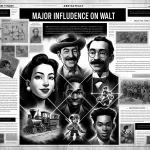-
目录
“The Perks of Being a Wallflower” is a coming-of-age novel by Stephen Chbosky that follows the life of Charlie, an introverted high school freshman navigating the complexities of adolescence. Through a series of letters addressed to an anonymous friend, Charlie shares his experiences with friendship, love, trauma, and self-discovery. The novel explores themes of mental health, the impact of past experiences, and the importance of connection. Key characters include Charlie, his supportive friends Sam and Patrick, and his family, each contributing to his journey of understanding himself and the world around him. The narrative captures the struggles and triumphs of growing up, making it a poignant reflection on the challenges of youth.
Overview of The Perks of Being a Wallflower
“The Perks of Being a Wallflower,” a novel by Stephen Chbosky, is a poignant coming-of-age story that captures the complexities of adolescence through the eyes of its introspective protagonist, Charlie. Set in the early 1990s, the narrative unfolds through a series of letters written by Charlie to an anonymous friend, allowing readers to delve deeply into his thoughts and feelings. This epistolary format not only provides an intimate glimpse into Charlie’s psyche but also serves as a vehicle for exploring themes of friendship, love, trauma, and the quest for identity. As the story progresses, Charlie navigates the tumultuous landscape of high school, grappling with the challenges of fitting in while simultaneously confronting his own emotional struggles.
One of the most compelling aspects of “The Perks of Being a Wallflower” is its exploration of the theme of isolation versus connection. Charlie, who is characterized as a sensitive and observant individual, often feels like an outsider looking in. His experiences resonate with many readers who have felt similarly alienated during their formative years. However, as he befriends a group of seniors, including the charismatic step-siblings Patrick and Sam, Charlie begins to experience the warmth of friendship and the exhilaration of first love. This transition from isolation to connection is pivotal, as it highlights the importance of relationships in shaping one’s identity and emotional well-being.
Moreover, the novel delves into the impact of trauma on personal development. Charlie’s past is marked by the loss of his beloved aunt, which casts a long shadow over his life. As he grapples with the memories of this loss, he also confronts other traumatic experiences, including the complexities of his family dynamics and the challenges of mental health. Through Charlie’s journey, Chbosky poignantly illustrates how unresolved trauma can manifest in various ways, affecting one’s ability to form healthy relationships and navigate the world. This theme resonates deeply, as it underscores the necessity of addressing emotional pain in order to foster personal growth and healing.
In addition to its thematic depth, “The Perks of Being a Wallflower” is populated with a rich cast of characters who each contribute to Charlie’s journey of self-discovery. Patrick, with his vibrant personality and unapologetic authenticity, serves as a catalyst for Charlie’s transformation. He introduces Charlie to the joys of friendship and the complexities of love, while also grappling with his own struggles related to identity and acceptance. Sam, on the other hand, embodies the ideal of first love, representing both the thrill and the heartache that often accompany such experiences. Together, these characters not only enrich the narrative but also reflect the diverse experiences of adolescence, making the story relatable to a wide audience.
Ultimately, “The Perks of Being a Wallflower” is a profound exploration of the trials and triumphs of growing up. Through Charlie’s letters, readers are invited to reflect on their own experiences of love, loss, and the search for belonging. The novel’s enduring appeal lies in its ability to resonate with individuals across generations, reminding us of the universal challenges of navigating the complexities of life. As Charlie learns to embrace his identity and confront his past, he ultimately discovers the transformative power of connection, leaving readers with a sense of hope and understanding that transcends the confines of adolescence.
小说中探讨的关键主题
In “The Perks of Being a Wallflower,” Stephen Chbosky intricately weaves a narrative that explores several key themes, each contributing to the profound emotional landscape of the protagonist, Charlie. One of the most prominent themes is the struggle for identity, which resonates deeply with readers navigating their own formative years. As Charlie transitions from middle school to high school, he grapples with his sense of self, often feeling like an outsider. This theme is particularly significant as it reflects the universal quest for belonging and acceptance during adolescence. Through Charlie’s experiences, Chbosky illustrates how the search for identity is often fraught with confusion and self-doubt, yet it is also a vital part of growing up.
Another essential theme in the novel is the impact of trauma and mental health. Charlie’s journey is marked by the shadows of his past, including the loss of his best friend and the complexities of his family dynamics. These experiences shape his worldview and influence his interactions with others. Chbosky does not shy away from depicting the struggles associated with mental health, portraying Charlie’s emotional turmoil with sensitivity and authenticity. This theme serves to highlight the importance of understanding and addressing mental health issues, particularly in young people, as it fosters empathy and encourages open conversations about such topics.
Friendship emerges as a crucial theme throughout the narrative, illustrating the profound connections that can form during adolescence. Charlie’s relationships with his friends, particularly Sam and Patrick, provide him with a sense of belonging and support that he desperately needs. Through these friendships, Chbosky emphasizes the significance of companionship in navigating the challenges of growing up. The bonds that Charlie forms with Sam and Patrick not only help him confront his insecurities but also allow him to experience joy and love, which are essential for personal growth. This theme underscores the idea that friendships can be both a refuge and a catalyst for change, enabling individuals to discover their true selves.
Moreover, the theme of love and its complexities is intricately woven into the fabric of the story. Charlie’s infatuation with Sam and his evolving understanding of love reflect the multifaceted nature of relationships during adolescence. Chbosky explores the nuances of romantic love, platonic love, and familial love, illustrating how each type of love can shape one’s identity and emotional well-being. Through Charlie’s experiences, readers are invited to reflect on their own relationships and the ways in which love can both uplift and challenge us.
Lastly, the theme of the passage of time and the importance of seizing the moment is poignantly captured in Charlie’s reflections throughout the novel. As he navigates the ups and downs of high school life, he learns to appreciate the fleeting nature of experiences and the significance of living in the present. This theme resonates with readers, reminding them of the importance of cherishing moments of joy, connection, and growth, even amidst the struggles of life.
In conclusion, “The Perks of Being a Wallflower” delves into themes of identity, trauma, friendship, love, and the passage of time, creating a rich tapestry that resonates with readers of all ages. Through Charlie’s journey, Chbosky invites us to reflect on our own experiences and the complexities of growing up, ultimately offering a message of hope and resilience in the face of life’s challenges.
Character Analysis: Charlie
In Stephen Chbosky’s novel “The Perks of Being a Wallflower,” the protagonist, Charlie, serves as a poignant lens through which readers explore the complexities of adolescence, mental health, and the quest for identity. As an introverted and sensitive teenager, Charlie’s character is intricately crafted, allowing readers to empathize with his struggles and triumphs. His journey begins with the profound impact of his best friend’s suicide, which leaves him grappling with feelings of isolation and confusion. This event serves as a catalyst for Charlie’s introspection, prompting him to navigate the tumultuous waters of high school life while dealing with his own emotional turmoil.
Charlie’s character is marked by his introspective nature, which is evident in his letters to an anonymous friend. These letters not only provide insight into his thoughts and feelings but also reveal his desire for connection and understanding. As he articulates his experiences, readers witness his vulnerability and the weight of his past traumas, including the lingering effects of his Aunt Helen’s abuse. This complexity adds depth to Charlie’s character, illustrating how unresolved issues can shape one’s identity and relationships. His introspection is both a strength and a weakness; while it allows him to reflect on his experiences, it also leads him to overthink and struggle with anxiety.
Moreover, Charlie’s relationships with other characters play a crucial role in his development. His friendship with Sam and Patrick introduces him to a world of acceptance and belonging, contrasting sharply with his earlier feelings of alienation. Through these friendships, Charlie begins to experience the joys of adolescence, such as first love and the exhilaration of new experiences. Sam, in particular, becomes a significant figure in Charlie’s life, embodying both a romantic interest and a source of emotional support. Their relationship highlights Charlie’s innocence and longing for connection, as he navigates the complexities of love and friendship.
As the narrative unfolds, Charlie’s character undergoes significant growth. He learns to confront his fears and embrace the challenges of growing up. This transformation is particularly evident in his evolving understanding of love and loss. Initially, Charlie struggles to articulate his feelings, often feeling overwhelmed by the intensity of his emotions. However, as he becomes more attuned to his own needs and desires, he begins to assert himself and take risks, ultimately leading to a more profound sense of self-awareness.
Furthermore, Charlie’s experiences with mental health are central to his character arc. His struggles with depression and anxiety are depicted with sensitivity, shedding light on the importance of mental health awareness. Through Charlie’s journey, readers gain insight into the impact of trauma and the necessity of seeking help. His eventual acknowledgment of his mental health challenges serves as a powerful reminder of the importance of vulnerability and the strength found in seeking support from others.
In conclusion, Charlie’s character in “The Perks of Being a Wallflower” is a rich tapestry of emotions, experiences, and growth. His journey from isolation to connection, coupled with his struggles with mental health, resonates deeply with readers. Through Charlie, Chbosky masterfully explores the intricacies of adolescence, highlighting the importance of friendship, love, and self-acceptance. Ultimately, Charlie’s story serves as a testament to the resilience of the human spirit and the transformative power of connection.
The Role of Friendship in the Story
In “The Perks of Being a Wallflower,” friendship emerges as a central theme that intricately weaves through the narrative, shaping the protagonist’s journey of self-discovery and emotional growth. The story, told through a series of letters written by Charlie, a sensitive and introspective high school freshman, highlights the profound impact that friendships can have on an individual’s life. As Charlie navigates the complexities of adolescence, the relationships he forms serve as both a refuge and a catalyst for his personal development.
Initially, Charlie grapples with feelings of isolation and alienation, stemming from the trauma of losing his best friend to suicide and the challenges of fitting into a new social environment. However, his life takes a transformative turn when he befriends step-siblings Sam and Patrick, who introduce him to a world of acceptance and belonging. This newfound friendship not only alleviates Charlie’s loneliness but also encourages him to confront his past and embrace his identity. Through their bond, Charlie learns the importance of vulnerability and the strength that comes from sharing one’s struggles with others.
Moreover, the dynamics of friendship in the novel illustrate the varying degrees of connection and support that individuals can offer one another. Sam and Patrick, with their charismatic and open-hearted nature, become pivotal figures in Charlie’s life, guiding him through the tumultuous waters of adolescence. Their friendship is characterized by moments of joy, laughter, and shared experiences, such as attending parties and exploring the intricacies of young love. These experiences serve to enrich Charlie’s understanding of himself and the world around him, reinforcing the idea that friendships can be a source of both comfort and growth.
As the narrative unfolds, the complexities of friendship are further explored through the lens of loyalty and sacrifice. Charlie’s relationships are not without their challenges; misunderstandings and conflicts arise, testing the bonds he has formed. For instance, when Charlie develops romantic feelings for Sam, he grapples with the fear of jeopardizing their friendship. This internal struggle highlights the delicate balance that often exists in friendships, where the desire for closeness can sometimes conflict with the fear of vulnerability. Ultimately, Charlie learns that true friendship involves navigating these complexities with honesty and courage, allowing for deeper connections to flourish.
In addition to Sam and Patrick, Charlie’s interactions with other characters, such as his family and classmates, further emphasize the multifaceted nature of friendship. His relationship with his aunt, for example, showcases the importance of familial bonds and the support they can provide during difficult times. Similarly, Charlie’s experiences with his classmates reveal the varying degrees of acceptance and rejection that can occur within social circles. These interactions serve to underscore the idea that friendship is not solely defined by shared interests or experiences but is also shaped by the willingness to understand and empathize with one another.
In conclusion, the role of friendship in “The Perks of Being a Wallflower” is pivotal to Charlie’s journey of self-discovery. Through the relationships he forms, he learns valuable lessons about acceptance, vulnerability, and the complexities of human connection. The novel ultimately illustrates that while friendships can be fraught with challenges, they also possess the power to heal, inspire, and transform individuals, making them an essential aspect of the human experience. As Charlie navigates the trials of adolescence, it is through the lens of friendship that he begins to understand himself and the world around him, highlighting the profound impact that these connections can have on one’s life.
Mental Health Representation in the Book
In “The Perks of Being a Wallflower,” Stephen Chbosky presents a poignant exploration of mental health through the experiences of its protagonist, Charlie. The narrative unfolds through a series of letters addressed to an anonymous friend, allowing readers to delve deeply into Charlie’s psyche as he navigates the complexities of adolescence. This epistolary format not only fosters intimacy but also serves as a powerful vehicle for illustrating the nuances of mental health struggles. As Charlie grapples with his own emotional turmoil, the book sheds light on various mental health issues, including depression, anxiety, and the impact of trauma.
One of the most significant aspects of mental health representation in the novel is Charlie’s battle with depression. His feelings of isolation and sadness are palpable, and they resonate with many readers who may have experienced similar emotions. Chbosky does not shy away from depicting the rawness of Charlie’s despair, which is often exacerbated by his past traumas, including the death of his beloved aunt. This portrayal is crucial, as it emphasizes that mental health issues can stem from both external circumstances and internal struggles. By illustrating Charlie’s journey, the author highlights the importance of acknowledging and addressing mental health challenges rather than dismissing them as mere teenage angst.
Moreover, the theme of anxiety is intricately woven into the fabric of the narrative. Charlie’s social anxiety manifests in his interactions with peers, often leaving him feeling like an outsider. This representation is particularly relevant in today’s society, where many young individuals grapple with similar feelings of inadequacy and fear of judgment. Chbosky captures the essence of anxiety through Charlie’s internal monologues, allowing readers to experience the overwhelming nature of his thoughts. This authentic depiction fosters empathy and understanding, encouraging readers to recognize that anxiety is a legitimate and often debilitating condition.
In addition to Charlie’s struggles, the novel also explores the mental health challenges faced by other characters, thereby creating a multifaceted representation of mental health issues. For instance, Sam, one of Charlie’s closest friends, grapples with her own insecurities and past traumas, which manifest in her relationships and self-image. By showcasing the diverse experiences of different characters, Chbosky underscores the idea that mental health is a universal concern that transcends individual circumstances. This collective representation serves to normalize discussions around mental health, encouraging readers to seek help and support when needed.
Furthermore, the book emphasizes the importance of friendship and support systems in navigating mental health challenges. Charlie’s relationships with his friends, particularly Sam and Patrick, provide him with a sense of belonging and understanding. Their unwavering support plays a crucial role in his healing process, illustrating the profound impact that positive relationships can have on mental well-being. This theme reinforces the notion that individuals do not have to face their struggles alone; rather, seeking connection and support can be instrumental in overcoming adversity.
In conclusion, “The Perks of Being a Wallflower” offers a rich and nuanced representation of mental health through its exploration of depression, anxiety, and the importance of supportive relationships. Chbosky’s sensitive portrayal of Charlie’s journey resonates with readers, fostering a deeper understanding of the complexities surrounding mental health. By addressing these themes, the novel not only validates the experiences of those struggling with mental health issues but also encourages open dialogue and empathy in society.
Coming-of-Age Journey of the Protagonist
In “The Perks of Being a Wallflower,” Stephen Chbosky intricately weaves a narrative that captures the essence of a coming-of-age journey through the eyes of its protagonist, Charlie. As a high school freshman, Charlie navigates the tumultuous waters of adolescence, grappling with the complexities of friendship, love, and self-identity. His experiences resonate with many readers, as they reflect the universal struggles faced during this pivotal stage of life. Through a series of letters addressed to an anonymous friend, Charlie articulates his thoughts and feelings, providing a deeply personal glimpse into his psyche.
Charlie’s journey is marked by his profound sense of isolation and introspection. Initially, he is portrayed as an introverted and sensitive individual, haunted by the recent loss of his best friend to suicide. This tragedy profoundly impacts Charlie, leading him to question his place in the world and the nature of his relationships. As he embarks on his high school experience, he feels like an outsider, observing life from the periphery rather than actively participating in it. This sense of detachment is a common theme in coming-of-age literature, as it highlights the struggle to find one’s voice amidst the cacophony of adolescence.
However, as the narrative unfolds, Charlie’s life takes a transformative turn when he befriends step-siblings Sam and Patrick. Their vibrant personalities and acceptance of Charlie allow him to break free from his self-imposed isolation. Through their friendship, he begins to experience the joys and pains of teenage life, including first love, heartbreak, and the complexities of social dynamics. This shift in Charlie’s circumstances illustrates a crucial aspect of the coming-of-age journey: the importance of connection and belonging. As he learns to navigate the intricacies of friendship, Charlie discovers that vulnerability can lead to profound personal growth.
Moreover, the novel delves into the theme of self-discovery, as Charlie grapples with his identity and the impact of his past. Throughout his journey, he confronts various challenges, including family dynamics, mental health issues, and the pressures of societal expectations. These elements serve to enrich his character development, as he learns to embrace his emotions and confront his fears. The process of self-discovery is often fraught with difficulty, yet it is essential for Charlie’s maturation. As he reflects on his experiences, he begins to understand the significance of his feelings and the importance of expressing them.
In addition to personal growth, Charlie’s journey also emphasizes the value of empathy and understanding. His relationships with Sam, Patrick, and other characters reveal the complexities of human emotions and the necessity of support systems during difficult times. The novel poignantly illustrates how shared experiences can foster deeper connections, allowing individuals to feel less alone in their struggles. This theme resonates with readers, as it underscores the importance of compassion and the impact of genuine friendships in shaping one’s identity.
Ultimately, Charlie’s coming-of-age journey is a testament to the resilience of the human spirit. Through his experiences, he learns to embrace both the joys and sorrows of life, ultimately emerging as a more self-aware and empathetic individual. The narrative encapsulates the essence of adolescence, highlighting the challenges and triumphs that define this transformative period. As readers accompany Charlie on his journey, they are reminded of the significance of connection, self-discovery, and the enduring power of friendship in navigating the complexities of growing up.
Impact of Music and Literature on Characters
In Stephen Chbosky’s novel “The Perks of Being a Wallflower,” music and literature serve as pivotal elements that shape the characters’ identities and experiences. The protagonist, Charlie, navigates the complexities of adolescence while grappling with his own emotional struggles, and it is through the lens of music and literature that he finds solace and connection. The novel is structured as a series of letters written by Charlie to an anonymous friend, allowing readers to delve into his innermost thoughts and feelings. This epistolary format not only provides insight into Charlie’s psyche but also highlights the profound impact that art has on his life.
Music plays a crucial role in the development of Charlie’s character and his relationships with others. Throughout the novel, he frequently references songs and artists that resonate with him, creating a soundtrack to his experiences. For instance, the inclusion of iconic tracks from the 1990s, such as those by The Smiths and David Bowie, serves to evoke a sense of nostalgia and emotional depth. These musical references not only reflect Charlie’s personal tastes but also act as a means of communication with his friends, particularly Sam and Patrick. As they bond over shared musical interests, Charlie begins to feel a sense of belonging, which is essential for his emotional growth. The music they listen to becomes a shared language, allowing them to express their feelings and experiences in a way that words alone cannot capture.
Moreover, literature is another significant influence on Charlie’s life, providing him with a framework for understanding his emotions and the world around him. He often quotes passages from books that resonate with his experiences, illustrating how literature serves as a source of comfort and guidance. For example, Charlie’s affinity for classic novels, such as “To Kill a Mockingbird” and “The Catcher in the Rye,” reflects his search for meaning and connection in a world that often feels overwhelming. These literary works not only shape his worldview but also offer him a sense of companionship, as he identifies with the struggles of the characters within them. Through reading, Charlie finds a way to articulate his feelings and confront his past traumas, ultimately aiding in his journey toward self-discovery.
The interplay between music, literature, and the characters’ emotional landscapes is further emphasized through the relationships they cultivate. Sam and Patrick, who introduce Charlie to new music and ideas, become instrumental in his transformation. Their shared experiences, often accompanied by the backdrop of music, create a safe space for Charlie to explore his identity and confront his insecurities. As he becomes more immersed in their world, he learns to embrace vulnerability and authenticity, which are essential components of personal growth. The characters’ interactions are often punctuated by musical moments, reinforcing the idea that art can foster connection and understanding.
In conclusion, “The Perks of Being a Wallflower” illustrates the profound impact of music and literature on the characters’ lives, particularly that of Charlie. Through the exploration of these artistic mediums, the novel highlights the importance of self-expression and the ways in which art can facilitate emotional healing and connection. As Charlie navigates the tumultuous landscape of adolescence, music and literature become not only sources of comfort but also catalysts for growth, ultimately shaping his journey toward acceptance and understanding. The interplay of these elements underscores the universal truth that art has the power to transcend individual experiences, fostering connections that resonate deeply within the human experience.
问答
1. **What is the summary of “The Perks of Being a Wallflower”?**
– The novel follows Charlie, an introverted high school freshman, as he navigates the challenges of adolescence, friendship, love, and mental health through a series of letters to an anonymous friend.
2.**本书的主题是什么?
– Key themes include the struggles of growing up, the importance of friendship, the impact of trauma, mental health awareness, and the search for identity.
3.**谁是故事的主人公?
– The protagonist is Charlie, a sensitive and introspective teenager dealing with the complexities of high school life and his own emotional struggles.
4. **What role do Charlie’s friends play in the story?**
– Charlie’s friends, particularly Sam and Patrick, help him navigate his experiences, provide support, and introduce him to new perspectives on life, love, and acceptance.
5. **How does mental health manifest in the book?**
– Mental health is portrayed through Charlie’s experiences with depression, anxiety, and trauma, highlighting the importance of seeking help and understanding one’s emotions.
6.**壁花奇缘》这个书名的**意义是什么?
– The title reflects the idea of being an observer in life, suggesting that there are advantages to being a wallflower, such as gaining insight into the world and the people around you.
7. **How does the book address the concept of identity?**
– The book explores identity through Charlie’s journey of self-discovery, as he learns to understand himself, his relationships, and his place in the world amidst the challenges of growing up.”The Perks of Being a Wallflower” explores themes of adolescence, mental health, friendship, and the struggle for identity. Through the protagonist, Charlie, the narrative delves into the complexities of growing up, dealing with trauma, and the importance of connection. The characters, including Sam and Patrick, serve as catalysts for Charlie’s journey of self-discovery and healing. Ultimately, the novel emphasizes the significance of acceptance, love, and the impact of shared experiences in navigating the challenges of youth.







